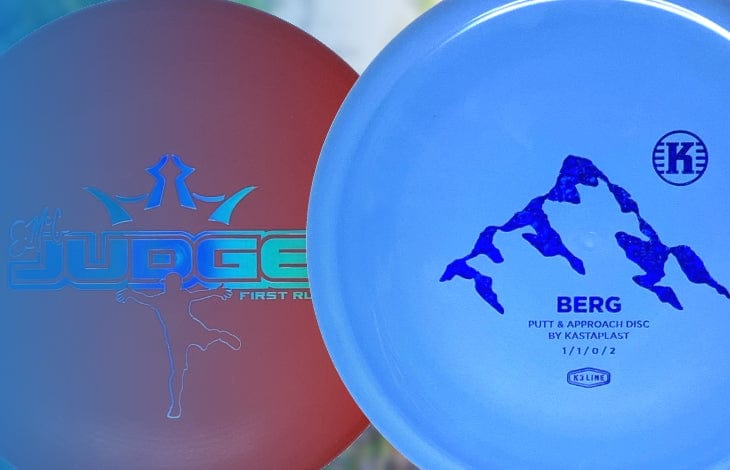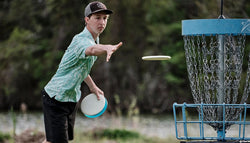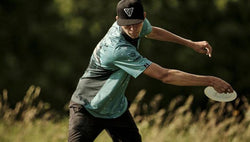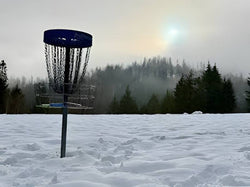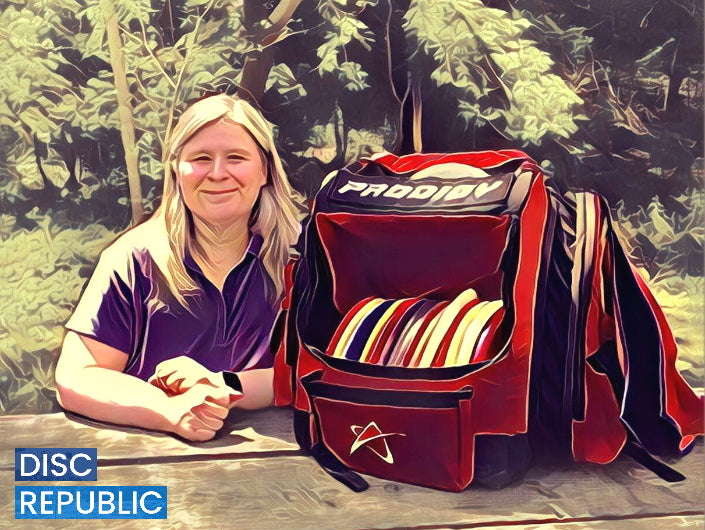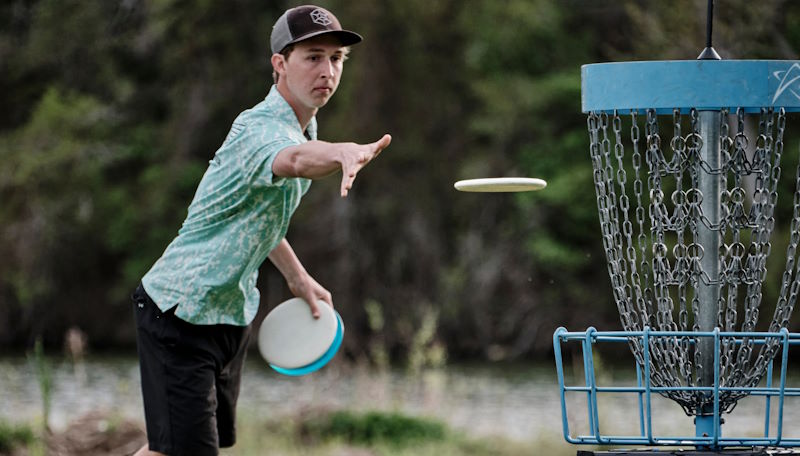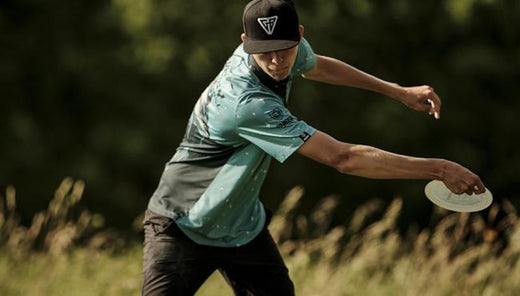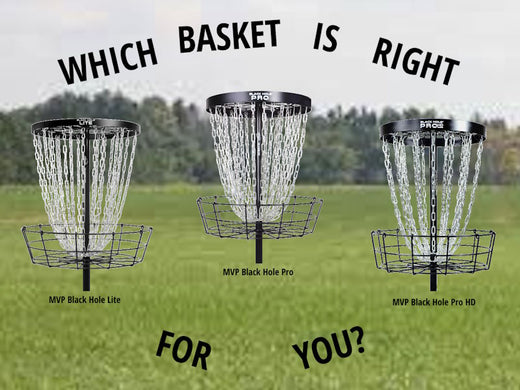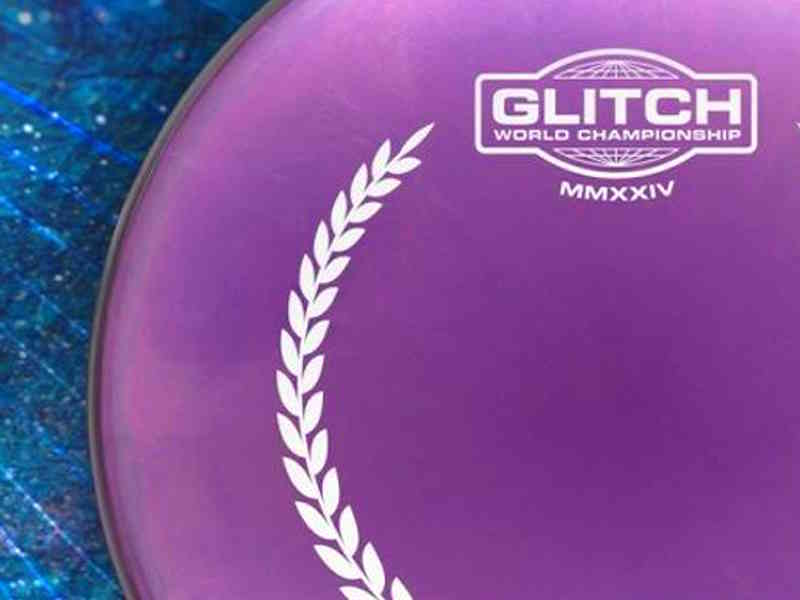
How I Built My Beginner Bag
- By @ticklesomebranches
- On Aug 09, 2021
- Comment 0
Getting started in disc golf is as easy as 1-2-3, or more precisely, purchasing a three-disc starter pack. Purchasing a pre-packaged set of discs is the easiest and most common way for new players to start out. These sets contain the bare essentials; a putter, mid-range and fairway driver and most disc manufacturers make them. This is how I started.
But what comes after the starter set? How does a beginner disc golfer start to build a bag as they develop skills and grow in their understanding of the game. The advice I received was to throw my starter set until I had played enough times to understand how they flew, and how I threw.
My starter discs all faded to the left at the end of their flight, so my first step was to find something I could throw straight. I used the Discraft Flight Chart to help me do this. Here’s what it looks like:
I loved that it put all of their discs in one place so I could compare easily. The chart also colour coded the discs for all players, intermediate players, and experienced players, so beginners, that green section is for us. There’s also a really nice description of what the flight numbers mean in the bottom right corner and that was also very helpful.
Most companies have some version of this, though I found the Discraft version the most user friendly. Here’s a link to the Dynamic Discs / Latitude 64 / Westside Discs version in case you are interested:

Using this chart helped me see the type of discs and flight numbers I should be shopping for - neutral to understandable - with low fade and a negative turn. I was ready to add my first disc to my starter set; a 2020 Paige Pierce Tour Series Big Z Buzzz. This became a point and shoot disc for me (as long as I threw it properly) and gave me confidence to throw at the basket or between trees. A straight flying mid-range is everyone’s best friend.
The next thing I wanted to do was throw straight farther so I started researching fairway drivers. The disc I found that fit the bill was a Latitude 64 Opto Diamond 170+ (mine was 174g). I loved this disc so much, I threw it on almost every tee for months.
One thing I wished I had realized earlier is how much more successful I would be with lighter weight discs. I ordered another Diamond, but this time in 165g rather than 174g, and even though it doesn’t sound like 9g should make a difference, it totally does. I have more control over the lighter disc and more regularly release it where I want at the angle I want. At least I feel like I do.
The Diamond is from the Latitude 64 “Easy to Use” line and is designed with new and or slower arm speed players in mind. I now have four of these discs in different weights, and don’t really throw the 174g version anymore.
My starter set putter was fading too far left on longer putts, so I really wanted a straighter putter. Perhaps I should have mentioned this earlier, but I have a noodle arm or a baby arm or whatever you want to call it. When I started, throwing far was hard, but putting far was IMPOSSIBLE.
The Paige Pierce Fierce is the putter I decided to try. (By now you’ve likely noticed I like Paige Pierce). This putter is so perfect for me. It fits my hand very well and doesn’t fade unless I throw it with hyzer. I use it for approaches too, and it will go dead eye straight unless I over power it, then it will float right. It has a nice shallow rim for my smaller hands, though that doesn’t mean people with big hands can’t throw it, my husband uses a Fierce too.
So at this point in building my bag, I had added a putter, a midrange and a fairway driver, essentially building my own next-steps, straight-flying starter set.
- Diamond (8 / 6 / -3 / 1) (165g)
- Buzzz (5 / 4 / -1 / 1) (I think it’s 175g)
- Fierce (3 / 4 / -2 / 0) (170-172g)

I used these discs, along with my starter set putter (for when I needed fade or when it was windy) for a few weeks until I identified some other needs in my game.
I added the Hailey King 2020 Tour Series Stalker, a fairway driver with similar flight to the Buzzz but faster with more fade at the end. The little extra stability, and the extra weight (175-176g) relative to my Diamond, makes this a great disc for me in the wind. Two more discs from the Latitude 64 easy to use line, the Sapphire and the Jade, are recent additions I’m hoping will get me some extra distance. And I’ve added a River as well, hoping to take advantage of it’s glide.
- Sapphire (10 / 6 / -2 / 1.5) (158g)
- Jade (9 / 6 / -2 / 1) (157g)
- Stalker (7 / 5 / -1 / 2) (175-176g)
- River (7 / 7 / -1 / 1) (165g)

My new favourite short to mid range disc is the Sol. I absolutely love it. It is an understandable disc and will float right before it elevators down ever so softly to the ground. This is very much a touch disc, and is great in the woods and for shots where you don’t want much ground play.

I’ve also recently added two overstable discs to my bag. The Harp, which is an overstable putt / approach disc, and the Roc, which is classed as a mid-range. Both are speed four but are shaped very differently. My intention for this discs is for dog-legs and fighting the wind.

So, at the seven month mark of my disc golf career, that’s my bag. Lots of light, straight flyers, with some heavier and overstable discs mixed in for balance. I do have several other discs that I’m still figuring out and practicing with, so maybe I’ll have an update a few months down the road.

